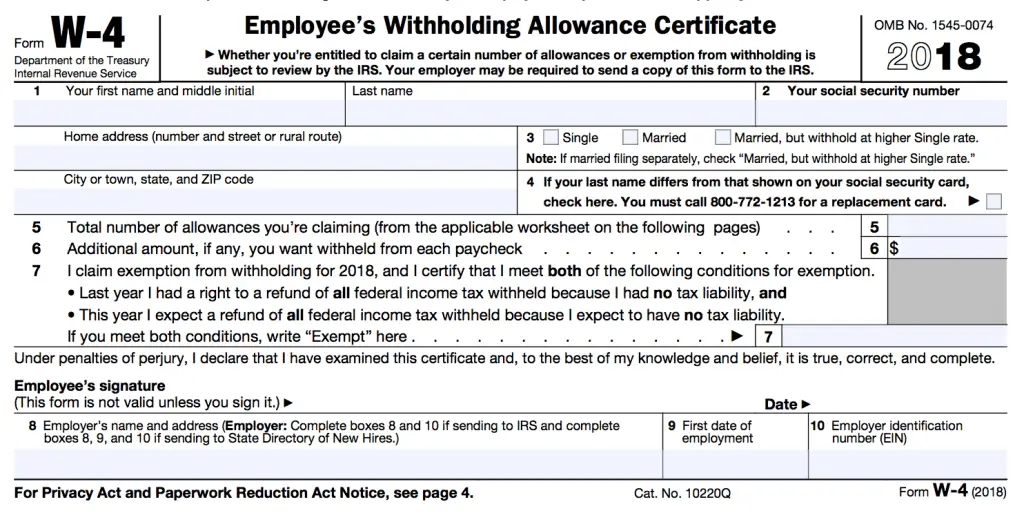W 4 Single 2 Allowances
The W-4 has always operated in a bit of a mystery mode: you put in allowances, and if those allowances need to go down (say you expect $4,000 in investment income – you would need to drop an allowance) it’s been okay because you only needed to hand in the top portion. If you put in 1 allowance vs 2, your employer wouldn’t know why. It is likely that if you are single and claiming 1 allowance on your W-4, you will get a small tax refund comes tax-filing season in April. Claiming 2 Allowances You can claim 2 w4 allowances if: A married couple with no dependents.
Updated for tax year 2017
If you recently bought your first home, you probably heard you can reduce your tax liability by deducting your home mortgage interest and property taxes on your return.
However, there’s no need to wait until you prepare your taxes next year to find out how much money you’ll save. In fact, you can put more of your hard-earned cash in your pocket today by adjusting your tax withholdings on Form W-4.
Adjusting your withholdings to match your new tax situation allows you to use your money on house and living expenses all year long rather than waiting to receive a refund.
How is that possible? Simply estimate your tax savings and adjust your allowances. Here’s a step-by-step breakdown of what you need to do.
Step 1: Determine how much your home mortgage interest and property taxes are this year.
To estimate your interest expenses for the year, start by looking at your monthly mortgage statement for the portion of your payment applied to interest. Multiply that number by the number of months in the year you will pay the interest expense. Add any loan origination points you can deduct this year.
Include interest expenses on qualifying home equity lines of credit, as well.
W 4 Allowances Single 2 Jobs
Next, locate your property tax payment on your property tax statement. Only look at the payments due after you purchased the house. Don’t use the amount of your mortgage payment placed in an escrow account for taxes but not paid to the taxing authority.
Additionally, look at your closing statement for any interest and property tax expenses you prepaid at closing.
Add all of these amounts together. The total is the potential dollar amount of itemized deductions you can take this year due to the purchase of your home.
Step 2: Analyze your total itemized deductions.
If you did not itemize in previous years, add the results from Step 1 to other potential itemized deductions, such as charitable contributions. Then compare that total to the standard deduction available for your tax situation. The standard deduction is the amount you can deduct if you don’t itemize and varies depending on your tax bracket and filing status.
For single taxpayers and married couples filing separately, the 2017 standard deduction is $6,350. If you file jointly, the standard deduction is $12,700. For heads of households, the standard deduction is $9,350.

If your itemized deductions are larger than the set standard deduction, you can consider adjusting your withholdings in order to avoid overpaying in taxes. Overpaying simply means you are lending the IRS your money interest-free for the entire year.
If you itemized your deductions in the past, your deductions should increase by the total amount of interest and property calculated in Step 1.
For example, let’s say your total estimated itemized deductions for 2017 are $16,700. If you file a joint return, your itemized deductions have increased by $4,000.
$16,700 – 12,700 (standard deduction) = $4,000
An increase in deductions also means you may overpay the IRS if you don’t adjust your withholdings accordingly.
Step 3: Change your withholding allowances if necessary.
A withholding allowance is an employee-claimed exemption on Form W-4. Based on the number of allowances listed, employers determine how much to subtract from an employee’s paycheck for taxes
For tax year 2017, each withholding allowance assumes an annual exemption amount of $4,050. That means for each $4,050 in deductions, you can consider adding one withholding allowance to your Form W-4.
Keep in mind, more withholding allowances means less income tax withheld and you receive a smaller tax refund. Fewer withholding allowances mean more income tax is withheld, resulting in a bigger refund.
Let’s go back to the example in Step 3. When your expected itemized deductions are $4,000 more than the standard deduction, you can claim one more withholding allowance.
If you aren’t sure how many allowances you currently claim, ask your payroll department.
Step 4: Turn in your new Form W-4.
Give Form W-4 to your payroll department after you make adjustments. Do not send it to the IRS.